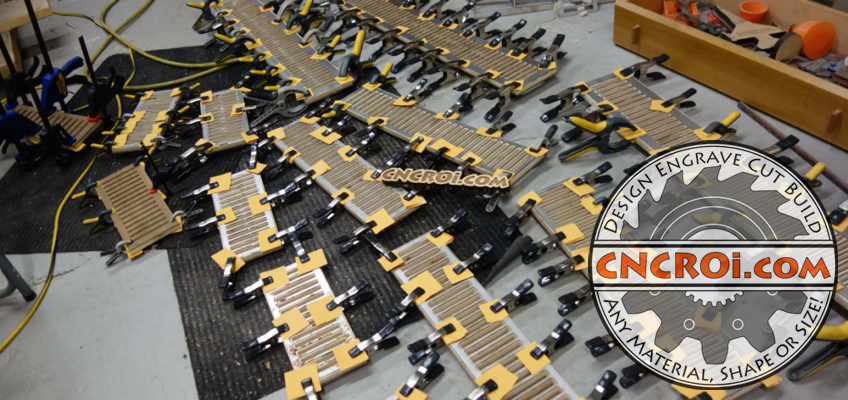Custom Registers: Wood & Stainless Steel
Custom registers made at CNCROi.com can be made out of any material, size or shape, you send us the design file, we make and ship it right to your door!
https://www.youtube.com/watch?v=VAasMmiPvy8/
For this specific project, the solid wood floorboards are too thick from the woodworking factory that produces them so the first order of business to make them into custom registers is to plane off about an eighth of an inch from the back, this will allow plenty of space for the stainless steel insert that will be bonded to it and still be within the specs of the architect.
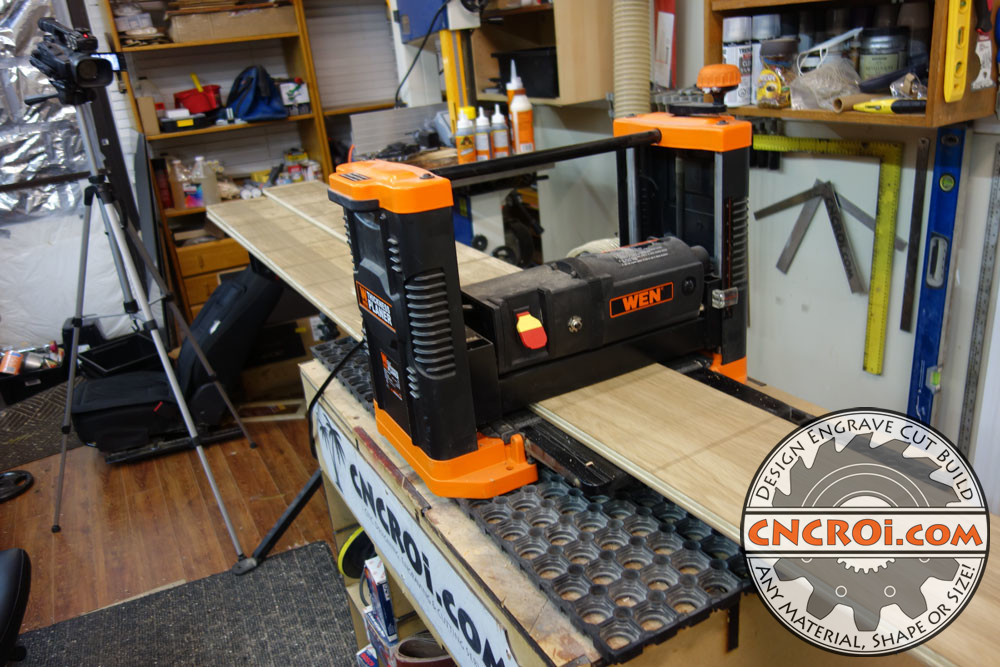
Of course, custom wooden floorboards do warp slightly, an issue that the planner also resolves, giving a nice clean bonding surface for the stainless steel so that these become super strong custom registers.
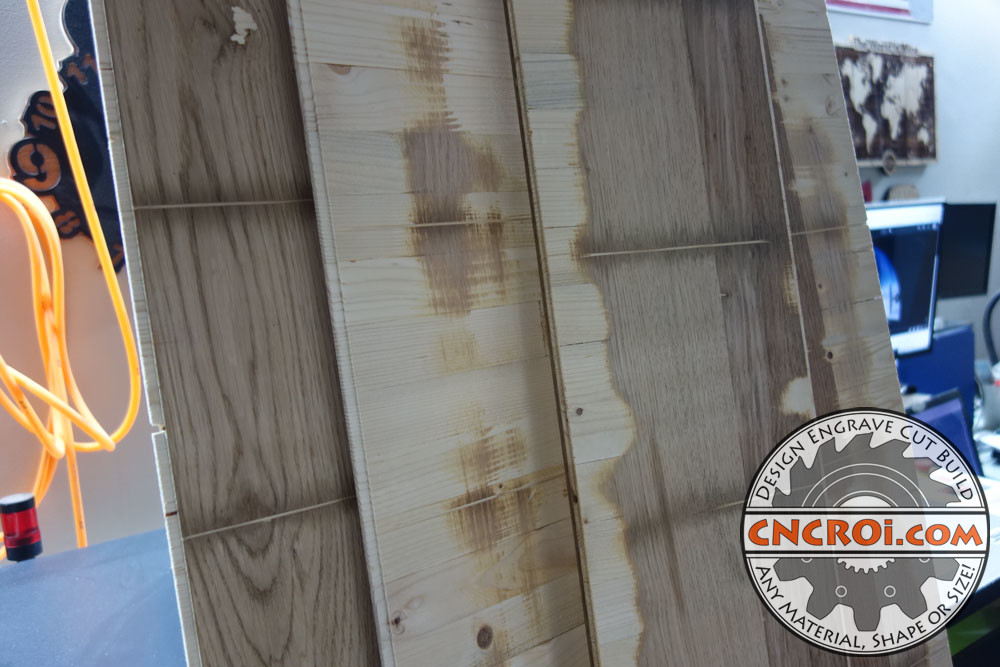
The next step along this journey involves our CNC router, it’s time to cut out all the holes so the custom registers can allow for easy passing of air through it and produce the shape that will be inserted onto and into the flooring to finish the project for the customer during installation.
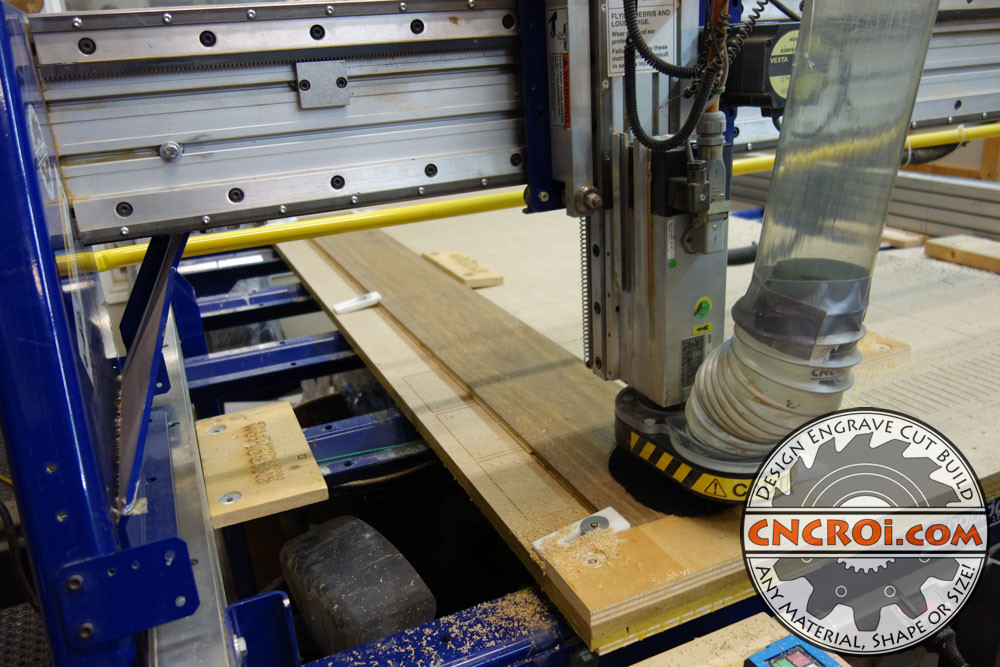
The production of these custom registers is pretty straight forward, it’s just many steps that need to be done in sequence in order to produce an amazing finished product by CNCROi.com.
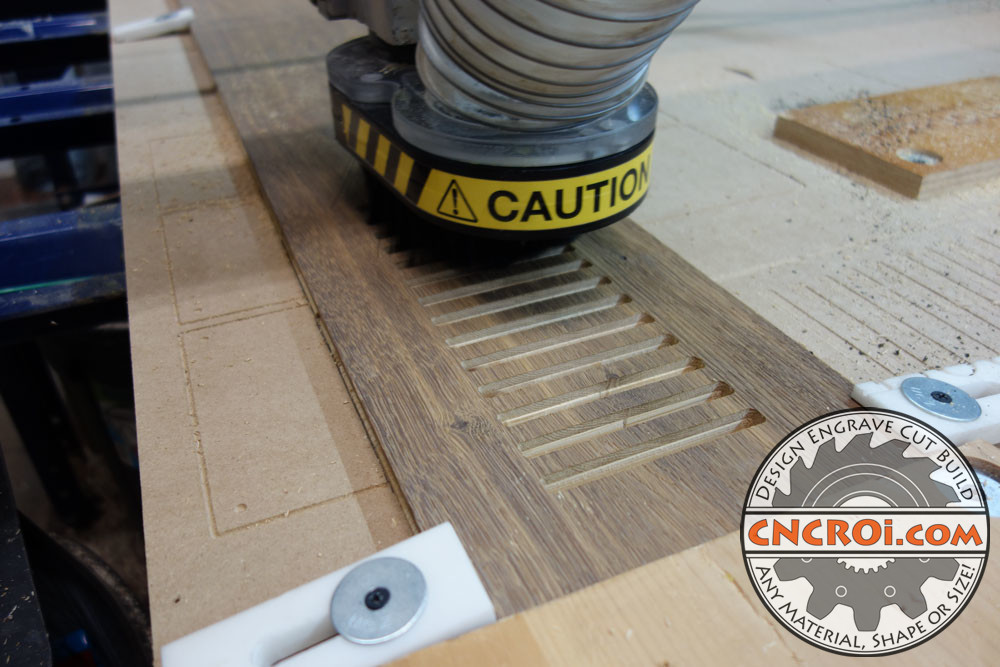
If you want to see how the prototype of this project was made, here’s the earlier video of that process, a lot simpler production!
https://www.youtube.com/watch?v=CuWgOXSftUw/
The hold downs you see on the wood plank are also made by CNCROi.com, it’s made using our CNC router and scrap Corian, I’ve used these endless times and they are endlessly useful for a wide variety of projects.
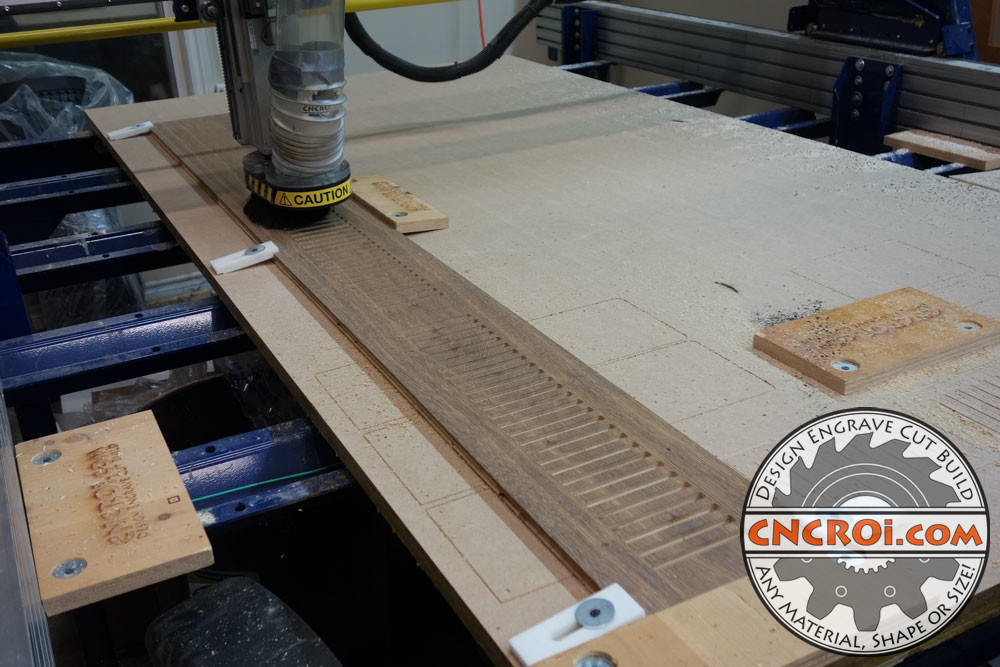
When it comes to producing custom registers, any design spec you can come-up with is what can be produced, you want more holes or less, wider or narrower, longer or shorter, odd shapes or even shapes, whatever you can imagine, CNCROi.com can produce for you.
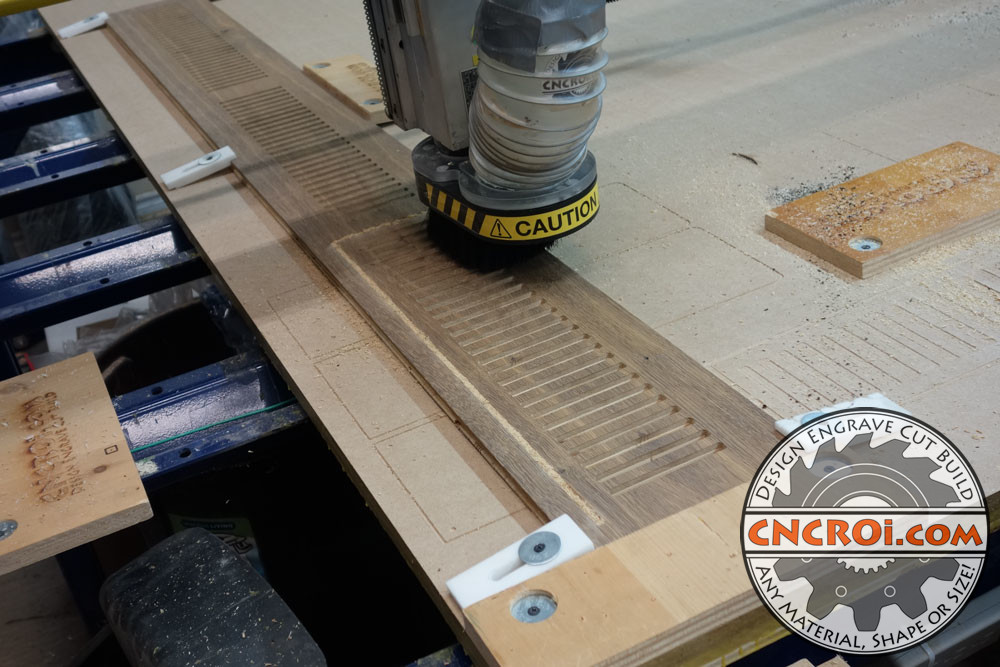
CNCROi.com specializes in custom fabrication, there is very little “standard” type work that we do at the shop, which is why you see a huge variety of projects undertaken by us across this website and the hundreds of blog posts showing just a glimmer of what we do.
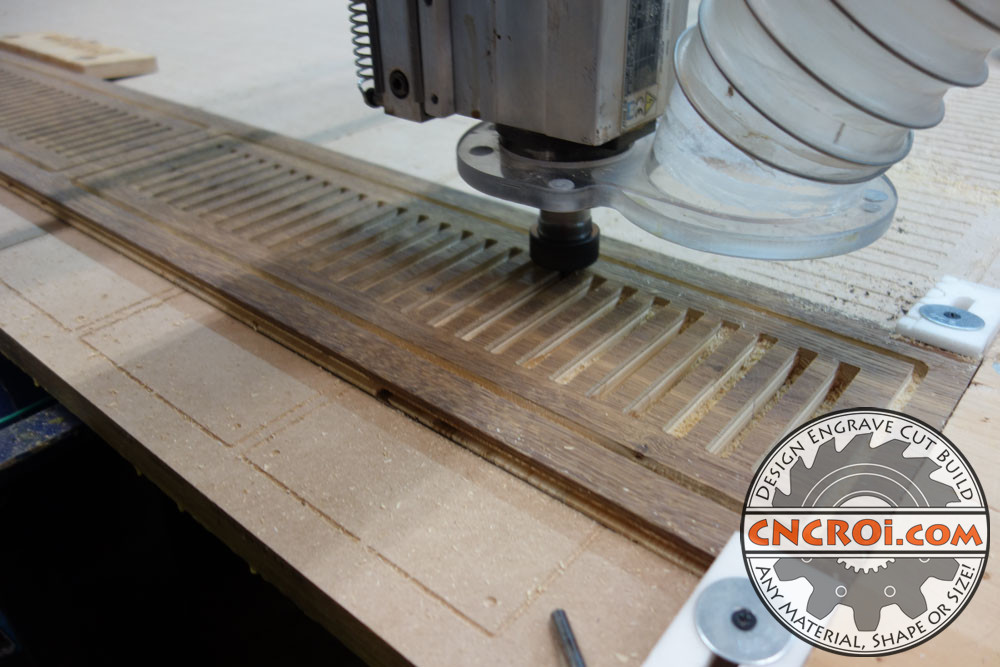
CNCROi.com uses its router for a whole host of projects, from kitchen cabinetry to custom wooden signage.
https://www.youtube.com/watch?v=auFEfgpm2tE/
There are a lot of different options when it comes to custom registers, the advantage of custom making these means any spec can be adhered to and allow you to easily have a solution that fits any home.
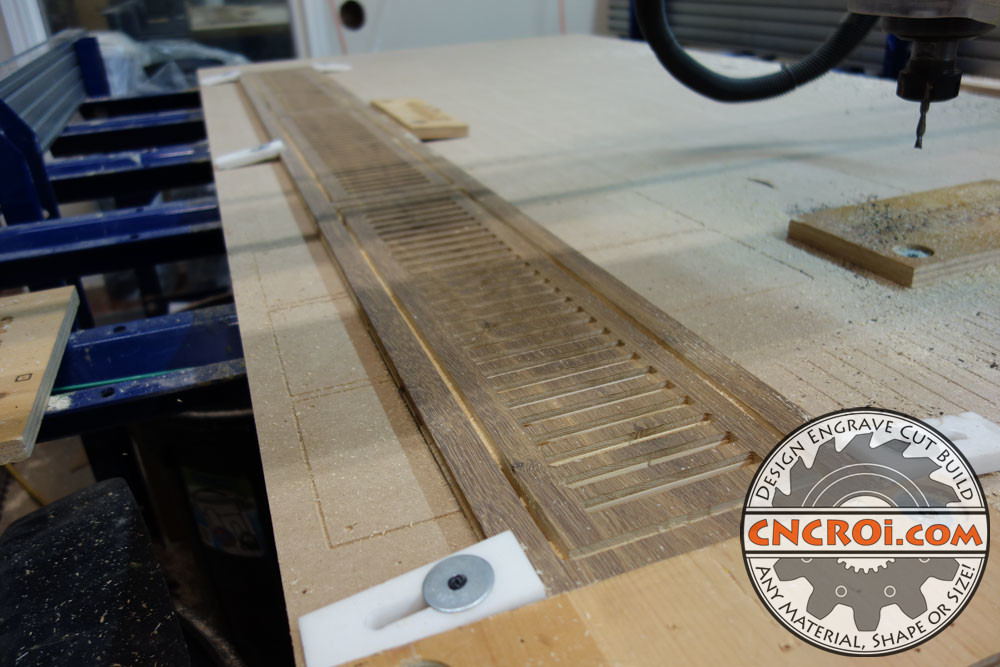
For this specific job, the customer wanted sharper inner corners than the quarter inch bit could produce so we did the job using said bit followed by an eighth inch, which also cleaned-up the fuzzies quite a bit on the inside.
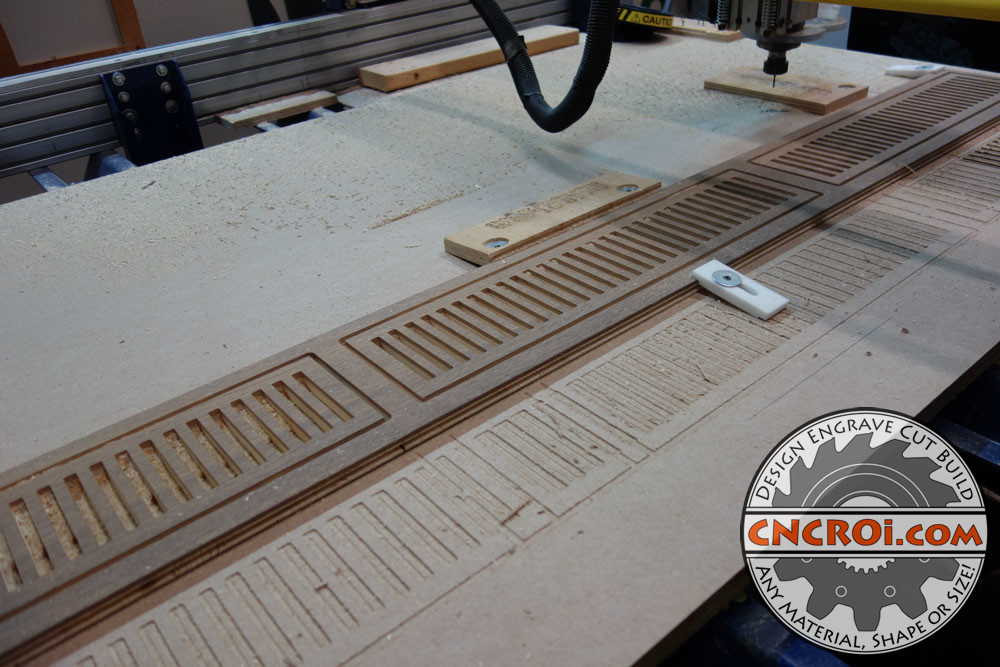
When it comes to CNC’ing out the holes, we had to do them twice for this job on each custom register, the first was with our CNC router on the wooden floorboards and the second, will be with our CNC plasma on the 12 ga 304 stainless steel.

What I really enjoy about CNC equipment is the absolute flexibility it allows me to provide to my customers when it comes to custom fabrication, skills that would be literally impossible anyway, such as these custom floor boards that are all different sizes and specs, would have taken an extremely long time to produce by hand or even with power tools, made relatively easily thanks to CNC.

When it comes to what’s possible using our CNC router, check out this sign I used this machine to make with lots of paint.
https://www.youtube.com/watch?v=TThHgeoadTg/
When it comes to producing with our CNC machines, the accuracy and precision across all the different platforms CNCROi.com offers allow for interchangeable production, meaning we are able to produce things just as accurately with one machine type as another.
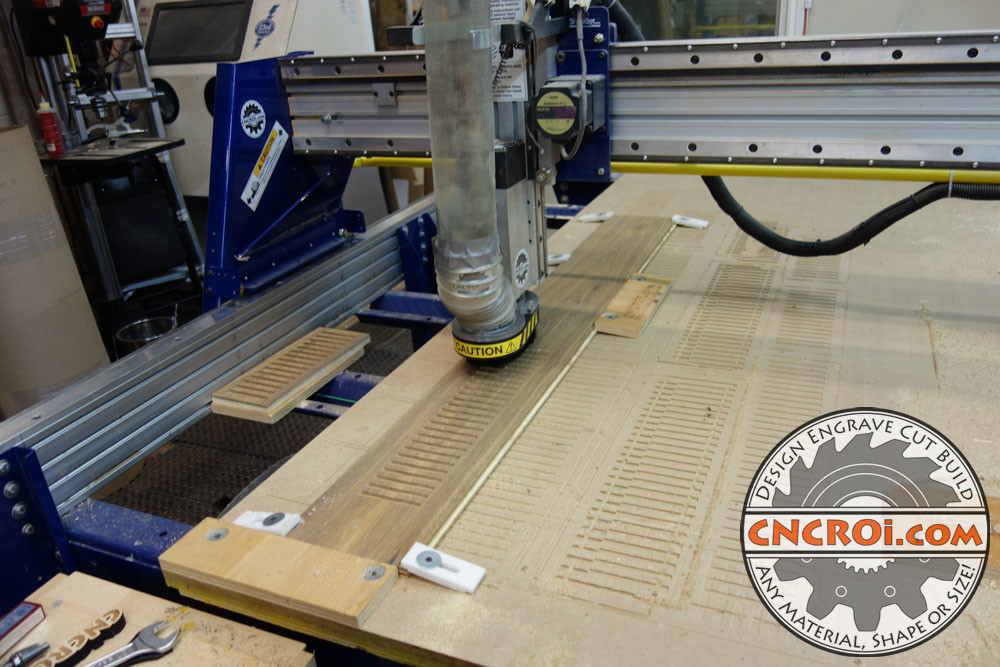
These custom registers were all made to customer spec, from the hole placement and size to the finishing, one thing I didn’t how was the extensive sanding and finishing required, it’s a boring part of the job production wise so I just skipped it documentation wise.
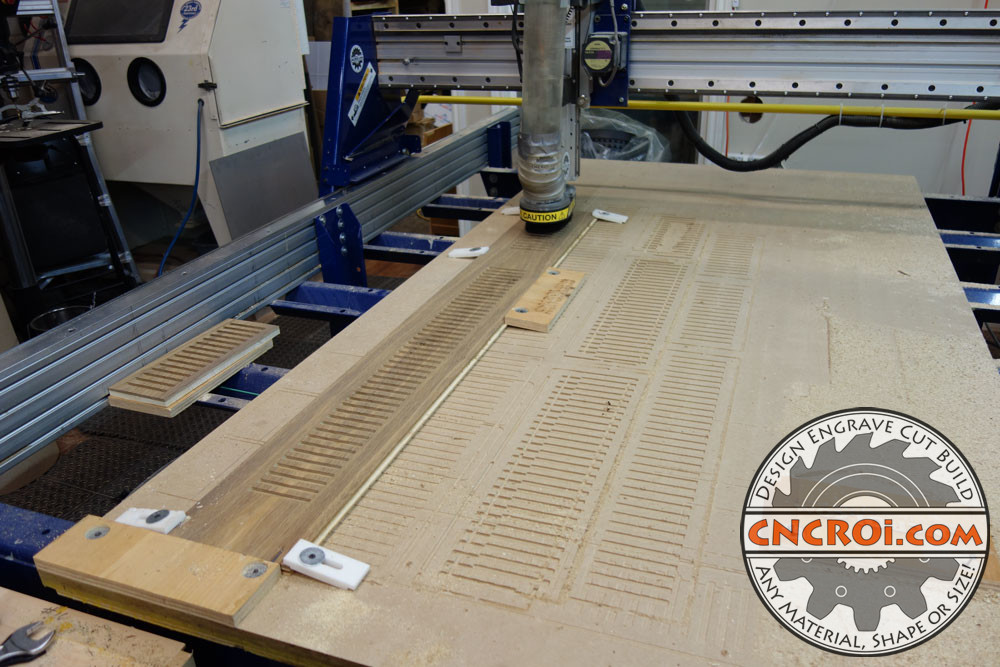
As you can see and observed in the video, the process of producing these custom registers was essentially the same but during production I ran out of clamps so had to divide-up this project into two batches, which worked-out fine as I was able to double the clamps I had in the shop previous to this job.
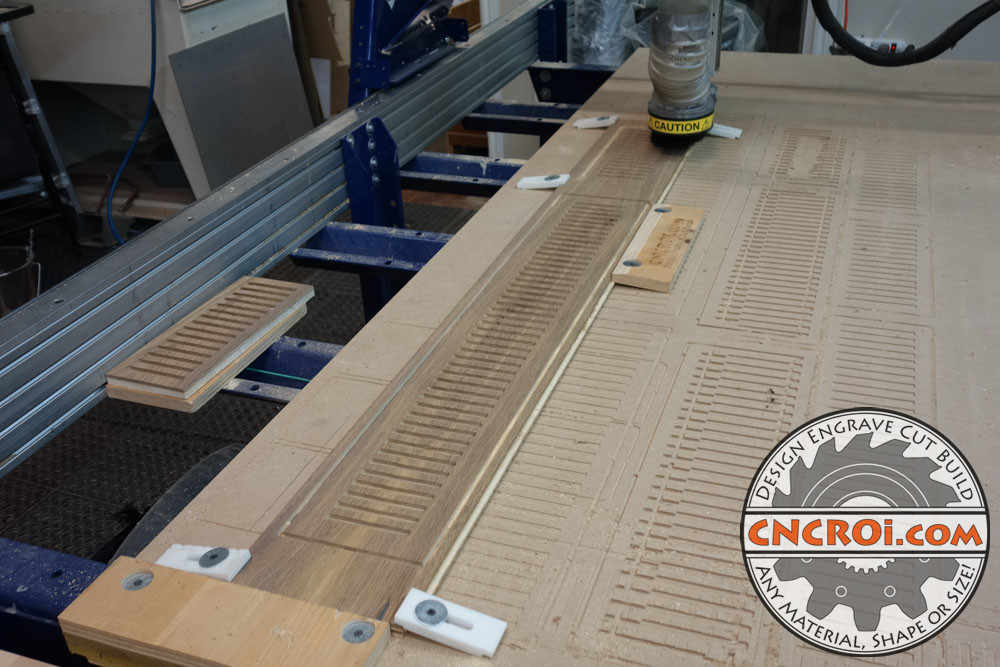
Projects like this make you realize how wonderful of a time it is to be alive with all the creative possibilities that CNC machines provide.
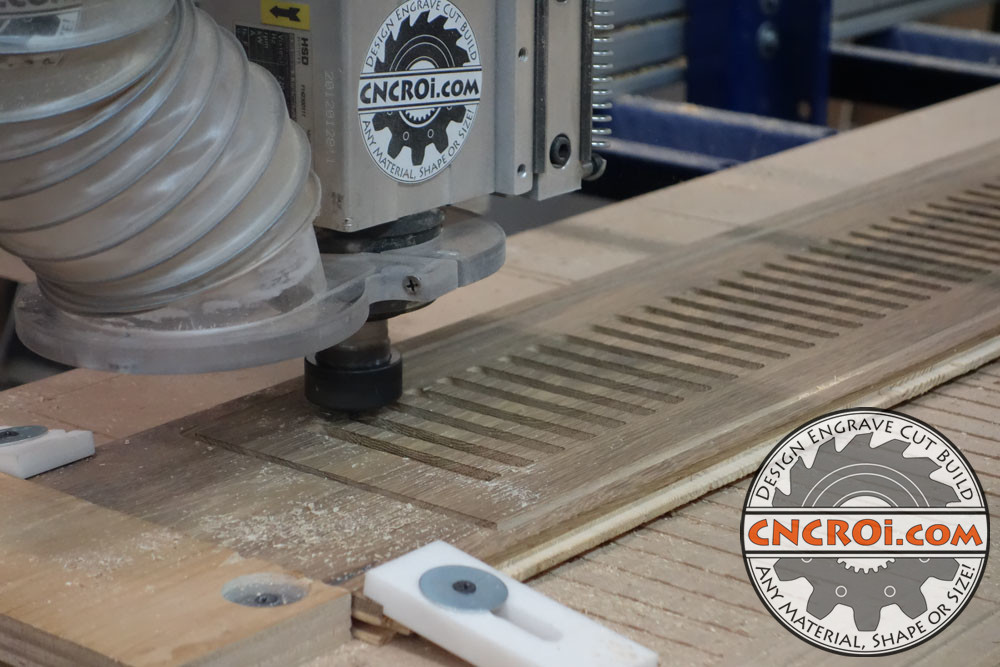
There was so much CNC routing on this job that once it was done, I had to shave up the sacrificial board, lots of holes were made during this project.
https://www.youtube.com/watch?v=A3R9u_DI5IE/
There is relatively little dust during production because I have a powerful extraction system sucking-up the fine dust particulate produced as well as the larger chunks, I just don’t have the dust boot on the machine because it makes for more interesting video and photos.
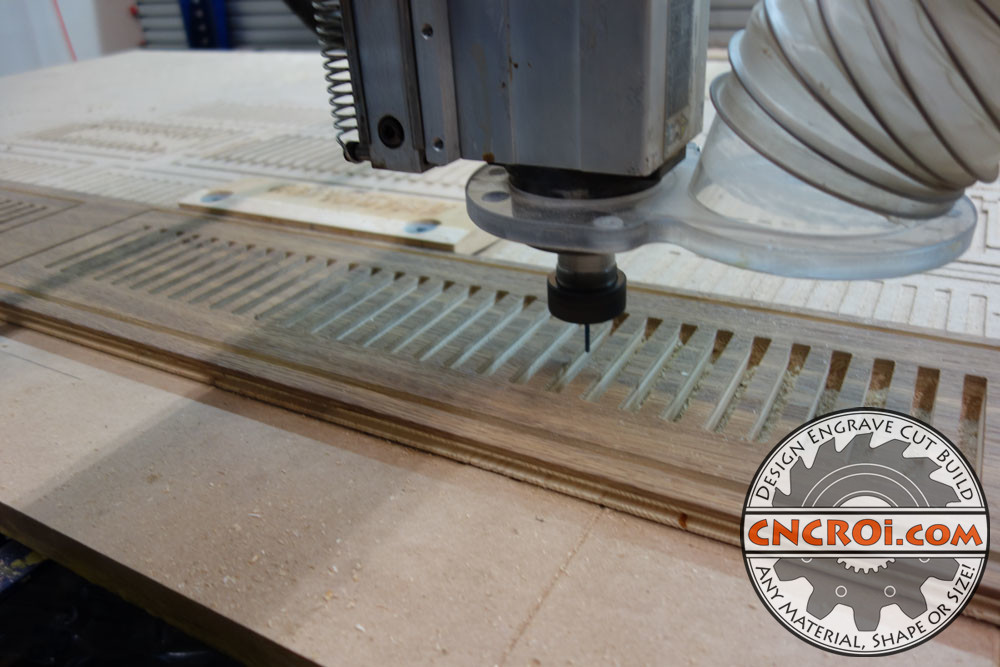
Custom registers are a great way to bring a little custom into your house, this project is a bit of an extreme example but we can make them at a smaller scale.
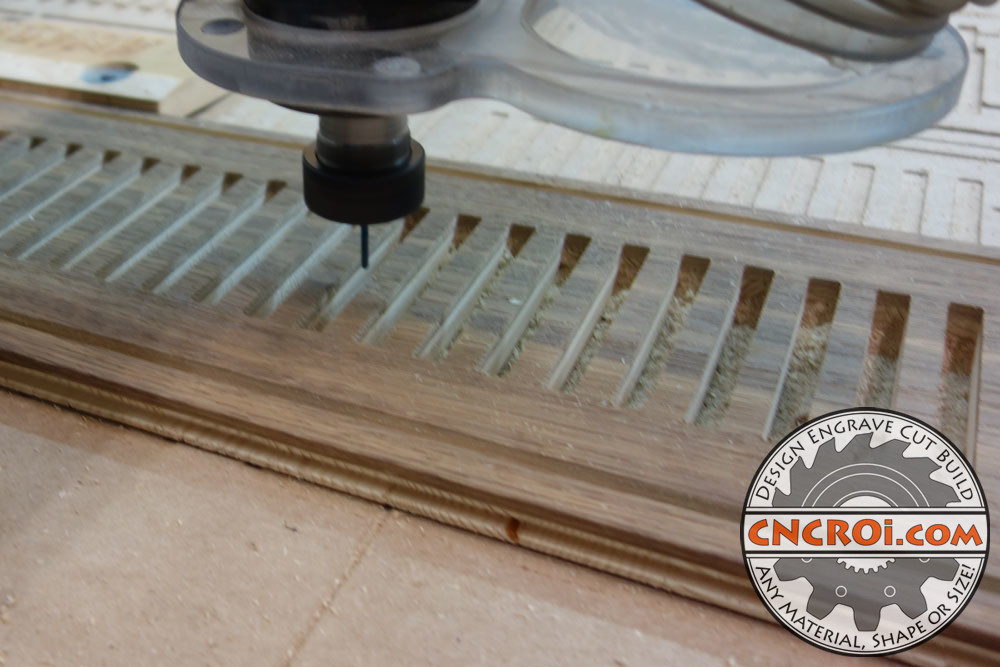
There was quite a bit of CNC routing for this job, these custom registers are deceptively simple looking considering how much work is involved with only the customer facing part of this project.
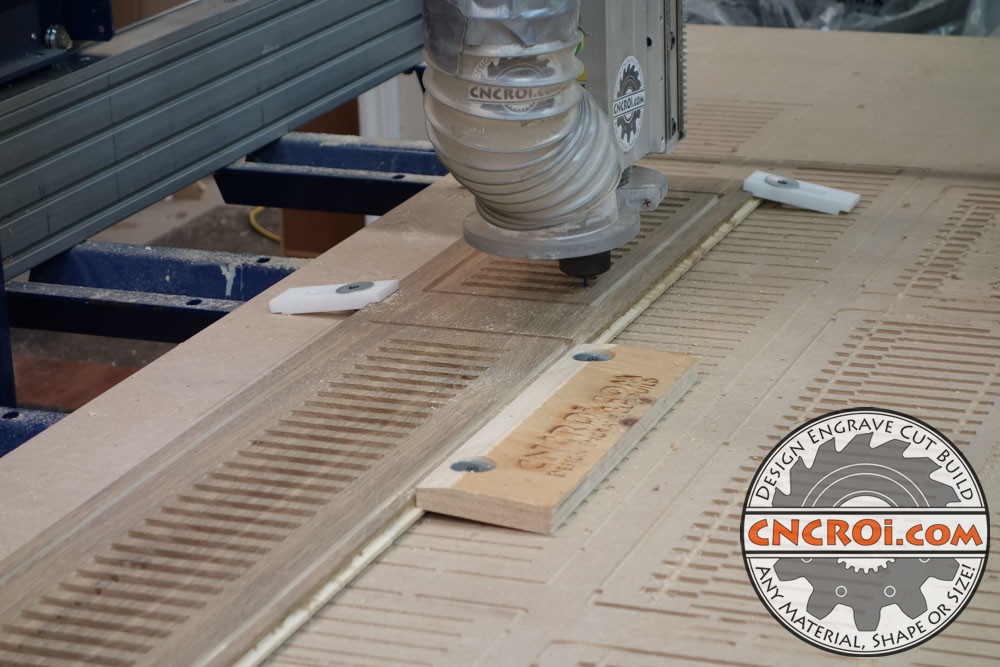
What I really enjoy is mixing and matching CNC machines, when you can use the best of all worlds for a custom job.
https://www.youtube.com/watch?v=x-4C2j1d1WI/
As mentioned, I did this job in two batches across both CNC platforms, I forgot to take many pictures for some reason of the plasma cutting process as I was so focused on getting things to cut perfectly at CNCROi.com using this 16 ga (roughly 1/16″) thick 304 stainless steel.
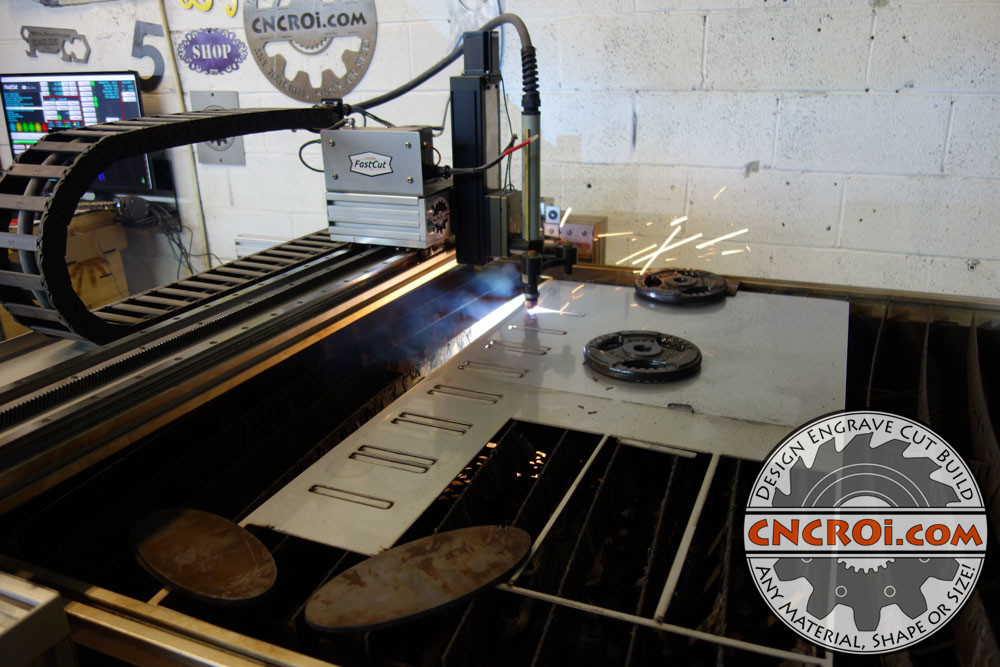
The only difference between the design file for the CNC router cutting out the wood and the CNC plasma cutting out the steel was that there was an outset and offset of roughly 1/8″ so that even if things shifted ever so slightly during the gluing process, the metal underneath was never revealed.
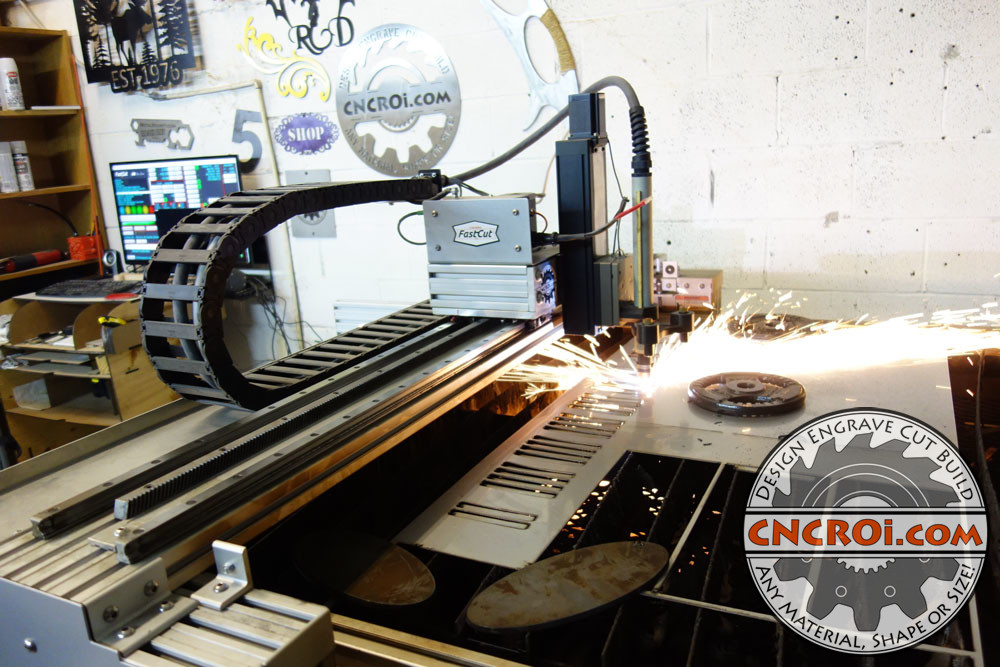
CNC plasma cutting is also a wild time, there are so many projects that just aren’t possible using wood or material traditionally cut using a router.
https://www.youtube.com/watch?v=6QrDGM8_G6U/
The reason for the stainless steel backing was strength, we had to remove a lot of wood on the backs of the custom registers so the stainless steel, although a lot thinner, added a dramatic amount of rigidity and “not fall through the floor if you step on it” power.

After all the stainless steel and wood custom registers were cut, an extensive amount of sanding and clean-up was required on all of them to make sure that once mated with glue, adhesion was at its best.
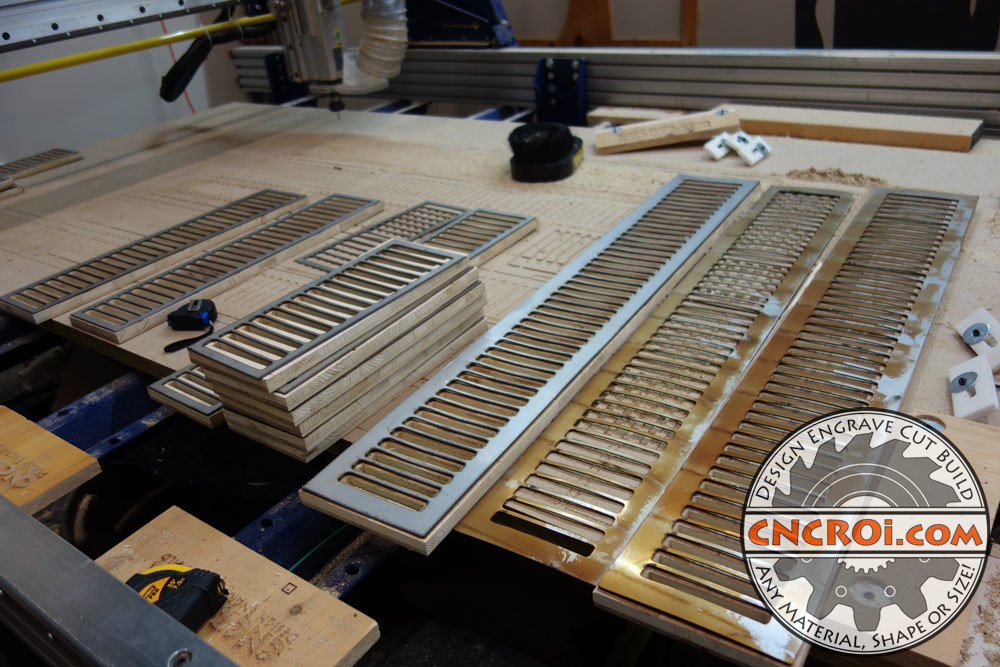
There were A LOT of holes produced with both the CNC router and the CNC laser, the difference is that the plasma kept the inside parts while the router turned all of that into dust.
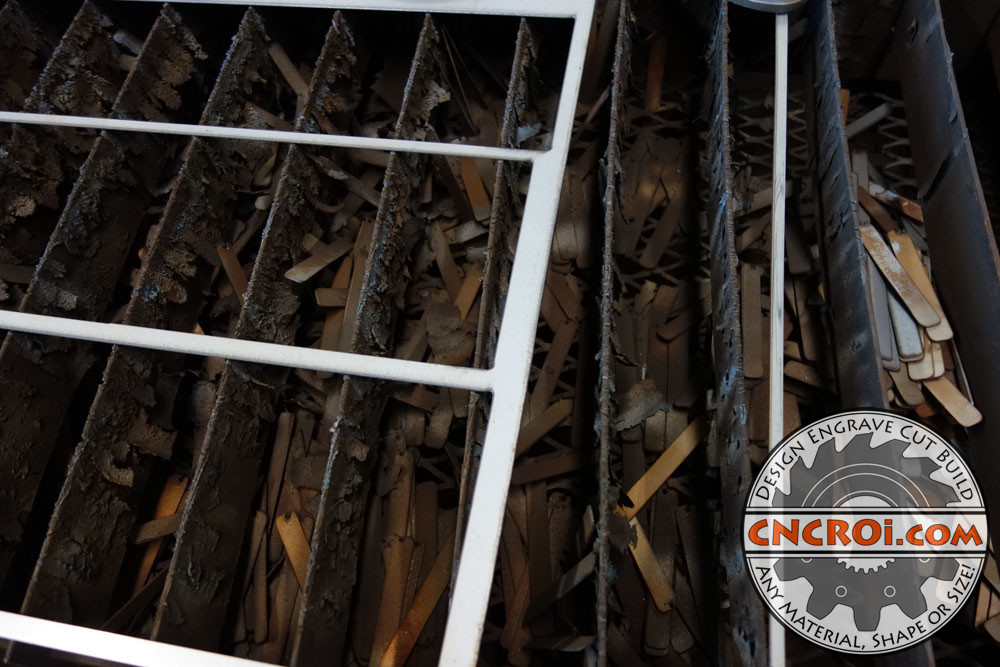
Below you can see half of the job and to get an idea of just how many clamps were required to allow everything to cure properly.
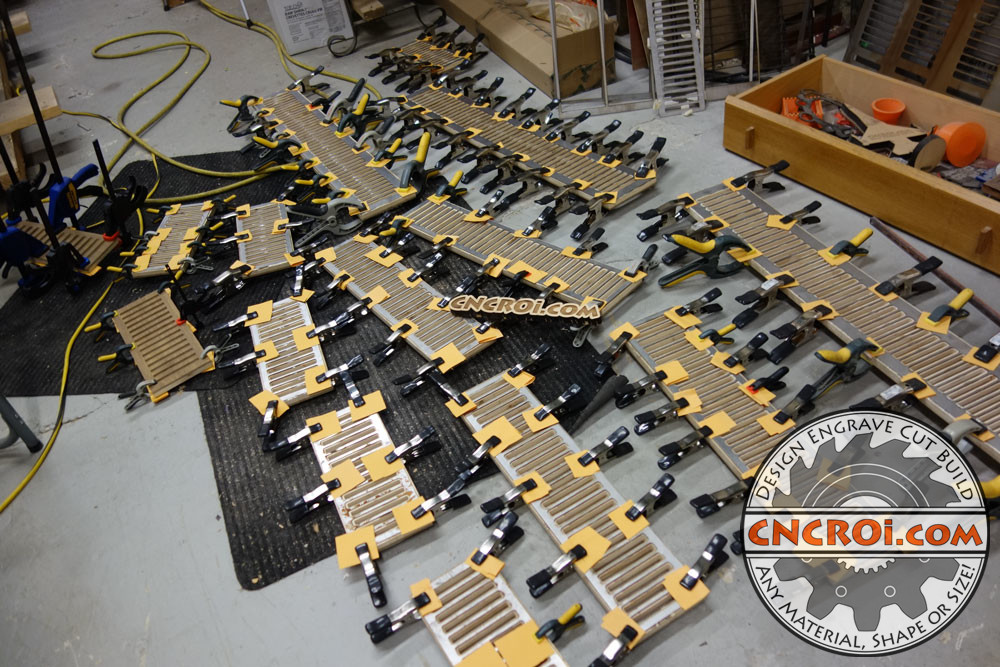
Looking for custom registers? Contact CNCROi.com right now!
https://www.youtube.com/watch?v=BEIzFHDronM/
